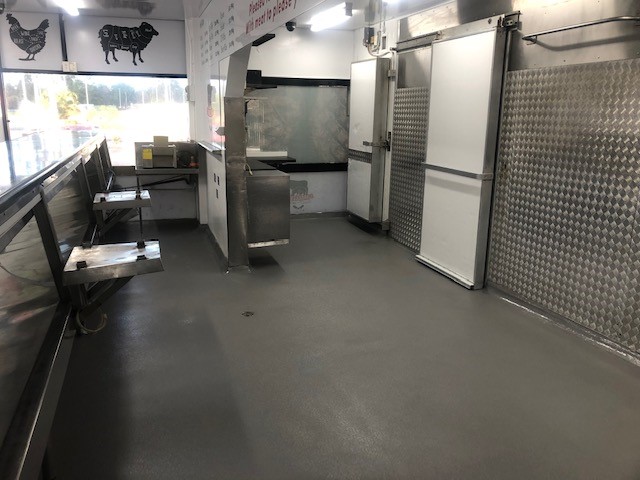Is Epoxy Flooring Slippery?

Epoxy flooring is popular due to its chemical and impact resistance, long life and easy-to-clean surface. It’s also an attractive choice as it can be customised, making it suitable for a range of spaces. Being seamless also appeals to people, especially when there are no grout lines, as there are with tiles.
Being a glossy surface, there is a common thought that epoxy flooring is slippery. In this article, we’ll take a look at why this does not necessarily have to be the case.
Slippery when wet
Any hard surface flooring is a slip risk when it’s wet, and epoxy flooring is no different so wiping up spills is important.
Epoxy flooring can be less slippery and more skid-resistant than numerous other smooth surfaces. With the ability to add slip-resistant coatings for higher-risk areas, it becomes a great option for both interior and exterior settings.
Quality of epoxy
Epoxy flooring isn’t always the cheapest flooring option, but with its ability to withstand the pressures of high-traffic areas, its durability and design makes it a highly popular and viable choice.
Using an experienced installation company that applies high-quality epoxy resins ensures the best result. At Tough Floors, we understand which epoxy product combinations work best in different areas and when slip-resistant additives are necessary.
Slip resistance levels
Flooring is required to meet Slip Resistance Standards as set out in the Building Code of Australia (BCA). Different types of flooring situations require different standards of slip resistance.
We apply a practical approach to slip resistance and look at aspects, such as, who is tracking across the floor. For example, the elderly, disabled and children may require a floor with more slip resistance, as may some animals.
The type of finish required changes with the use of the space. Using epoxy flooring around a pool, for example, where the surface is likely to be wet requires a different focus to an interior hallway which will generally stay dry. We will advise you on this.
If slipping is a concern in the area to be floored, slip-resistant coatings can be used to reduce the risk further. These create extra traction in indoor areas that are prone to being wet or in outdoor spaces.
For more information, we offer expert advice on slip resistance options.
Independent slip testing and compliance
To identify the risk of slipping, slip testing is carried out and a rating is given to the surface. A wet or dry test can be completed depending on the surface to be tested.
A wet test measures how slippery a surface is when it’s wet and is used in areas where the floor is likely to be exposed to liquids. In a dry test, the floor’s surface friction is measured using specialist equipment; this is generally performed on surfaces likely to stay dry – large buildings, shopping centres, etc.
When considering an independent slip test, make sure it meets set industry standards and uses accredited providers.
The Building Code of Australia includes safe performance requirements. Most commercial buildings are expected to provide slip-resistant surfaces for safe movement, especially in emergency access areas. Non-slip and non-skid surfaces are also required for pedestrian ramps, stair treads and landings.
With the ability to increase the non-slip element of epoxy flooring, this is an effective way to maintain safety in commercial premises.
If required, Tough Floors can have your floor independently slip tested, rated and certified for accreditation and compliance purposes.
Just enjoy it
Not only can you reap the benefits of a floor that will cope with the demands you place on it and look great. But you will also have peace of mind to know that everyone’s safety won’t be compromised with this excellent flooring option.
If you have questions about slip resistance or any other aspects of epoxy flooring, then get in touch, and we’ll provide you with help. Contact Us.

